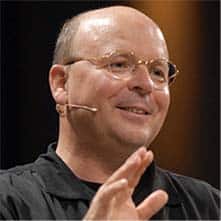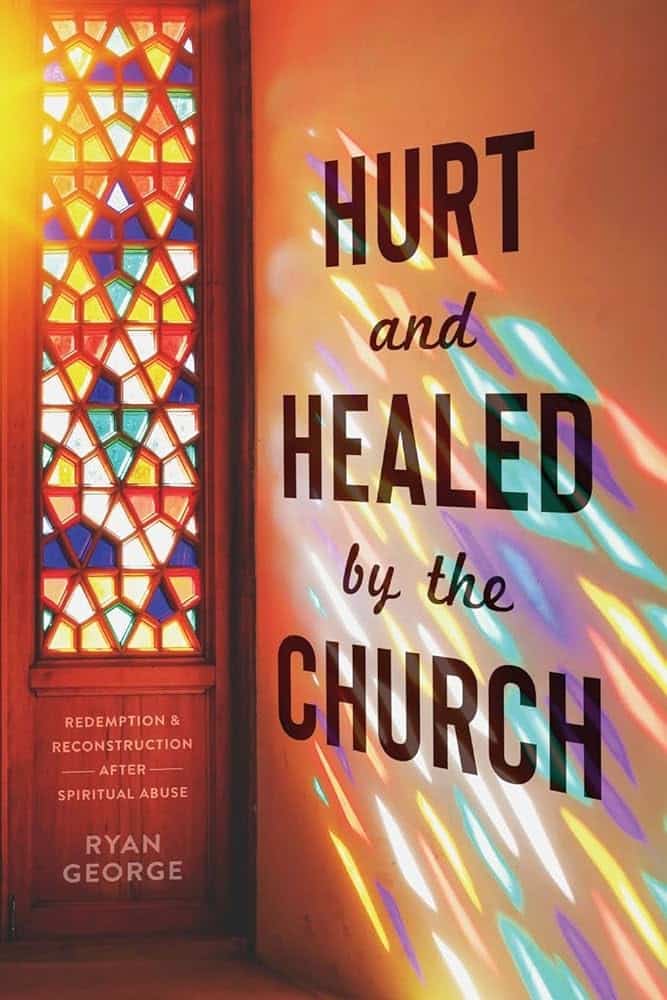Is Christmas an elaborate hoax—or the pivotal point in human history? This week on The Roys Report, I’ll be interviewing atheist-turned Christian, Lee Strobel, about The Case for Christmas. Is the virgin birth really a concept that intelligent people can accept? What about the idea of God incarnating a man? Lee will be sharing new material not included in any of his best-selling books. Join us for The Roys Report, this Saturday morning at 11 on AM 1160 Hope for Your Life, and on Sunday night at 7 on AM 560 The Answer!
Lee Strobel

Atheist-turned-Christian Lee Strobel, the former award-winning legal editor of The Chicago Tribune, is a New York Times best-selling author of more than forty books and curricula that have sold fourteen million copies in total. He is Founding Director of the Lee Strobel Center for Evangelism and Applied Apologetics at Colorado Christian University. His books include The Case for Christ, which is also available as a movie on Netflix; The Case for Faith; The Case for a Creator; The Case for Grace; and The Case for Christmas. He and Leslie have been married 47 years and divide their time between Houston and Denver.
Note: This transcript has been edited slightly for continuity.
Segment 1:
ANNOUNCER: In the midst of all of today’s noise and confusion, we need a voice that cuts through the chaos to bring wisdom and clarity. Welcome to The Roys Report with Julie Roys—an hour-long show exploring critical issues related to faith and culture from a uniquely Christian perspective. Now, here’s your host, Julie Roys.
JULIE ROYS: Is Christmas and elaborate hoax or the pivotal point in human history? And can an intelligent person really embrace that God became a man or that a virgin conceived a child? Welcome to The Roys Report brought to you in part by Judson University. I’m Julie Roys. And today we’re going to be examining Christmas. And when I say Christmas, I don’t mean the trappings of Christmas, the tree and the gifts and the holiday parties. But Christmas itself. The birth of Christ, the incarnate Son of God in a manger in Bethlehem. Sure, we sing the songs about His birth, and we put out nativity scenes on our front lawns. But do we really believe the Christmas story? And are there any good reasons to think that the biblical account is actually true? Well, joining me today as someone who used to be an atheist, but then he investigated the claims of Christianity. And to his surprise, ended up embracing the faith that he had railed against for his entire life up to that point. His name is Lee Strobel. And for many of you, he needs no introduction. He’s authored more than 40 books that have sold 14 million copies. And his book, The Case for Christ which tells about his personal journey to faith has been made into a movie that’s now available on Netflix. He’s also done lots of other “Case For” books, including The Case for Faith, The Case for a Creator, The Case for Grace and the book we’re going to be talking about today, The Case for Christmas. So Lee, welcome to the program. It is such a joy to talk to you.
LEE STROBEL: Well, thanks Julie. Always great to talk with you. Hope you having a great Christmas season.
JULIE ROYS: We are. Although it’s kind of just going to begin after today because [I’ve been] working up into this point. And then I’m looking forward to doing a lot of last minute Christmas shopping.
LEE STROBEL: Yeah, me too. I got a little bit ahead of me.
JULIE ROYS: Well, it’s good to know that there’s some other last minute folks like me out there. You know, I was thinking the last time we talked I think was in 2017. That was when your movie came out about your life. Was absolutely phenomenal movie. And people, if you have not seen The Case for Christ, that movie is just so, so good. Just so enjoyed that. But since then, before we jump into The Case for Christmas, I want to talk just briefly about something that just happened—I think in August, wasn’t it?—that the Lee Strobel Center for Evangelism and Applied Apologetics opened at Colorado Christian University, correct?
LEE STROBEL: Yeah, we’re very excited about it. What we’re going to be doing is offering dozens, in fact, well over 100 online accredited courses, starting this fall, in the area of evangelism. And what we call “applied apologetics,” by that we mean that our goal isn’t to create ivory tower academics or intellectuals. It’s really the great people who are confident and equipped to be able to share Jesus and defend the Christian faith in their everyday world. And so we’re going to be launching our first courses next fall and looking forward to people who just want to take one or two courses just to learn more about why we believe, what we believe. And others who want to get an undergraduate degree or a master’s degree or even a PhD. So, we’re going to have a lot of opportunities to go further in understanding that the basis, the foundation, of the Christian faith.
JULIE ROYS: Well, I have a senior in high school right now. So, Colorado Christian is on the list. This is my baby. So, my very last one.
LEE STROBEL: It’s great school I’m telling you, you know, we looked at a lot of different schools where we wanted to perhaps, land our center. And I just love Colorado Christian. They’re just awesome. The more we’re involved, the deeper we go, the more we find the godliness of their faculty and the passion of the students and the solid—that’s one of the top growing Christian universities of any kind in the country. High quality—and anyway, I’m kind of a become a become a cheerleader for Colorado Christian.
JULIE ROYS: Well, I love Colorado, so we’re actually out there in January, and definitely gonna swing by the school and take a look. So [I’m] excited about that. I think it’s so important for schools to have apologetics programs and classes. And there’s too few, I think, Christian schools that do. So hats off to them. That’s outstanding.
LEE STROBEL: It’s also one of the few Christian Schools—I think the only one I know of—that requires every student—whether you’re a nursing student or a business student or whatever—every student takes a course on relational evangelism—learns how to share their faith. I think that’s awesome.
JULIE ROYS: That’s fantastic. And you know, sometimes at those Christian Schools, they need to evangelize each other sometimes.
LEE STROBEL: (laughter) Yeah, that’s true.
JULIE ROYS: That’s an important thing. Well, let’s dive into this book. I actually looked on Amazon. The Case for Christmas, which came out—what, five years ago?—it’s still on the top 100 list.
LEE STROBEL: Is that right?
JULIE ROYS: It is. So, there aren’t very many books that have that kind of staying power. So, I think that speaks to the content of it. And also, to your popularity as a writer. But let me just start with sort of an overarching question. Now that you’ve invested years in researching the evidence for Christmas, in all of your investigations on Christmas, are there any traditions that you found don’t withstand scrutiny?
LEE STROBEL: Yeah, I really have. It’s fun as I’ve tried to separate sort of the, the holiday from the holy day and the facts from the fantasy and the truth from the tradition I’ve I found that certain things have kind of come into our popular conception of Christmas but don’t really have a biblical basis. I’ll give you a good example. The popular conception of the Christmas story is that Mary and Joseph, because of the census, called the Bethlehem, she is about to give birth, and they come into town and there’s an innkeeper that says, “Sorry, no room at the Inn. So, they don’t have a place to go. They go into a stable or a cave and she gives birth among the animals, and then puts the baby in the manger. Well, there’s a problem with that is there probably was no Inn and no innkeeper. There were commercial lodging places available in the first century but probably not in Bethlehem. It was a small town and it was not a major thoroughfare. But the key is the word that’s used there that’s translated as, “Inn.” It’s a Greek word called kataluma. And it’s only used two times in the New Testament. And the other time it’s us is the place where the Last Supper was held, where it clearly means a spare room. And so, if Luke wanted to say this was an Inn, this was a commercial lodging institution, you would use a different Greek word. But he used kataluma. And the best translation of kataluma is, “guest room.” In fact, if you were to look at the NIV version—the New International Version—it says that there was no guest room available for them. And you can trace that back. I traced it back to the year 1395 where John Wycliffe’s translation used the word, “chamber, room.” And then later the King James Version kind of picked up this idea that was it was an “inn,” and that’s kind of what spawned the story. But so, let me explain real quickly what this involved. In the first century in this locale the typical house had one large room, but it was divided in two parts. The first part the larger area was the family room. And that’s where you would cook and eat and sleep. And then there were a few steps down to the animal room. And this is where the family donkey or the cow or a couple of sheep would spend the night. So at the last thing in the day, they would bring them into this section of the room that separated by some stairs—there might be half a dozen stairs that go up to the family room—and the animals would stay in there. And there was a manger in there. And then often these animals during the night would come up these little stairs into the family room. And they would hang out with the family, you know the sheep and so forth. And so, they had a manger in the family room as well. So, what some houses did is they added a second room. This was the kataluma—the guest room. And it had its own entrance—its own exterior entrance. So, this is the room that Luke was referring to. So, what he’s saying basically is that they came into Bethlehem. Mary and Joseph had relatives there. They went to one of the relative’s house and it would have been great for pregnant Mary to be in the guest room but there was no room—it was already occupied. So, she had to give birth in the in the living area. And of course, there were animals around. And she did give birth among the animals. And there was a manger there. And so all that is probably accurate. It probably is not by the way accurate that she was on the verge of giving birth when she came into town. That actually comes from a second century account that’s pretty much legendary and not based on historic reality. If you read carefully, Luke chapter 2 verse 6 says that the time for the baby to be born came while they were there in Bethlehem. So that could be they were there five hours, are there five weeks. It’s unclear. So, she may or may not have been on the verge of birth. So anyway, that’s just one clarification that I think add some historical validity to what probably happened.
JULIE ROYS: I’m just trying to figure out whether we have to change our nativity scenes. Are they okay? But we’ve got the manger we’ve got the animals but maybe not a barn type environment. Maybe a little bit different. Again, I’m speaking with atheist turned Christian Lee Strobel, author of The Case for Christmas. We’re going to be discussing more things about Christmas. What’s true, what isn’t true and what’s the evidence? Please stay tuned. We’ll be right back.
Segment 2:
ANNOUNCER: We now return to The Roys Report. Here’s your host, Julie Roys.
JULIE ROYS: Can intelligent people really believe in the story of Christmas—that God became man and a virgin conceived a child? Welcome back to The Roys Report. I’m Julie Roys. And today I’m discussing the case for Christmas with best-selling author and atheist turned Christian Lee Strobel. And by the way, I’m giving away six copies of Lee’s book The Case for Christmas today. And if you’d like to enter to win a copy of that book, you can do that by going to JulieRoys.com/giveaway. Also, if you’d like to join our conversation today, I encourage you to do so on social media. To get to us on Facebook, just go to Facebook.com/ReachJulieRoys. And on Twitter, our handle is @ReachJulieRoys. So Lee, returning to our discussion, you were saying a little bit about where this “Inn” that we know that Mary and Joseph came to is probably not what we’re thinking of in our modern conception. And it was probably just a spare room in a relative’s house. What about the wise men? Because obviously, in many of our nativity scenes, we have these three wise men. My understanding is they probably weren’t there at Jesus’s birth either.
LEE STROBEL: Right. That’s correct. I mean, they came at some later time. And given the fact that King Herod ordered the killing of all the children under the age of two in Bethlehem, trying to figure out—he was trying to figure out when the birth had taken place, and he wanted to eliminate all possible suspects. So, within the first couple of years is when this happened. It’s interesting though, when you read the actual account in Scripture, it doesn’t say explicitly that they were led to Bethlehem by the star—the Magi. It says they were led to where Jesus was. And so perhaps Mary and Joseph had already left Bethlehem by then and were elsewhere. But wherever they were, that’s where the Magi were led and met with the with the child. Of course we also have the shepherds who, they were there. They came at the time that the baby was born, or shortly thereafter. And so we do have the accuracy of the Nativity scenes with the shepherd’s being there.
JULIE ROYS: Just not the Wisemen. And we have Wisemen in our nativity scene at home, but I really like it. So, I’m just keeping it.
LEE STROBEL: Yeah, there’s nothing wrong with that. You know, when we made our movie The Case for Christ, we did what they call time shifting. There’re some things in movies where you have to shift some time to make it work. And that’s a little bit of time shifting. But that’s okay. They were ultimately there.
JULIE ROYS: Absolutely a little bit of artistic license there.
LEE STROBEL: Yeah, there you go. That’s a good way to put it.
JULIE ROYS: So, let’s talk about the reliability of these accounts that you’re obviously referencing in the Gospels. We have Matthew, Mark, Luke and John, each recounting different parts of the story of Jesus and his life on Earth. Can we really trust these? And what reason do we have that we can trust them?
LEE STROBEL: Yeah, it’s interesting when we go back specifically to the account of the birth of Jesus in the gospels, there are two gospels that mentioned that specifically, and that’s Matthew and Luke. What’s interesting, though, is when you look at the number of times that Mary and Joseph are specifically mentioned in those two gospels, what you realize is that Luke’s Gospel tells the story from Mary’s perspective, which makes sense. Luke was sort of a first century investigative reporter. That’s why he’s one of my favorite characters of the first century. And he interviewed people. He checked things out, as he said, to make sure of the certainty of what took place. And so, he probably interviewed Mary herself or friends of Mary to get her side of the story. Matthew, on the other hand, writes from Joseph’s perspective. And when you think about it, it makes sense because Joseph the earthly father Jesus—not the biological father, but the earthly father of Jesus—died apparently before Jesus earthly ministry began. But Matthew became a leader in the church in Jerusalem. Well guess who else was a leader there? James, the half-brother of Jesus. And so it would have made sense that Joseph would have told the children the story of what happened with the birth of Jesus, and this unusual circumstance—this virgin conception. And that’s apparently where James heard it. And then he probably passed it on to Matthew when they were leaders of the church in Jerusalem. So you have two different perspectives. Why that’s important is this means we have two independent sources for the story of the Virgin conception of Jesus, which is the central teaching of the birth of Jesus—the incarnation. And these go back very early. So, these are sources that Matthew and Luke drew upon that go back even before the gospels were written. So, this takes it way back. Some critics say, “Oh, this idea that Jesus was born of a virgin, that was a later edition that the Christians later said, ‘Well, we want to bolster the divine credentials of Jesus, so let’s invent this story that he was born of a virgin.’” No. I mean, we have a story goes way back to the beginning to the first generation of Christ followers. Now the question comes up that “Well, what about John? And what about Mark? How come they don’t mention the virgin conception?” And then, “What about Paul? He doesn’t mention it either. So, what’s the deal?” And I think the answer is that not all the Gospels report every detail about the events of Jesus life. In fact, John was the last gospel written. And so, he doesn’t repeat a lot of material that’s already been made known in the other gospels. But it is interesting, there is a church tradition that says that John mentored in early church father by the name of Ignatius. And in the first century, Ignatius wrote a letter specifically confirming that Jesus was, “Truly born of a virgin.” So, where did he get that idea? Well, maybe from his mentor, John. And then Mark. Well, Mark doesn’t deal with the early years of Jesus at all. So, he doesn’t reference this. But he does in Mark 6:3, he refers to Jesus as the Son of Mary. Now, normally a Jewish person would be identified with the Father’s name—be, “the son of Joseph.” Even if the dad was dead. They would identify someone that way. But here we have an implicit acknowledgement that Joseph was not the biological father of Jesus. And then, in terms of why Paul didn’t mention it, I think that it simply wasn’t an issue relevant to the things that prompted him to write his epistles. He doesn’t mention a lot of details about Jesus. He doesn’t mention Mary, Joseph, Bethlehem. That doesn’t mean that those places didn’t exist. But then again, in Galatians 4:4, Paul says, “God sent forth his Son coming from a woman.” So here again, you have this reference that apparently something unusual about his birth. And in fact, in 1 Corinthians 15, Paul talks about, in different ways, how Adam and Jesus came miraculously from the hand of God. And an early church apologist named Irenaeus later connects this with the virgin birth. So, he’s indicating that there’s something miraculous about his birth. So, I think we have good solid historical reasons to believe in the virgin birth. The records of the Gospels I think, are reasonable to believe from an historical standpoint. Especially when you look at their dating, you know, when you look at the book of Acts, we see that it doesn’t mention a lot of things that happened in the 60s A.D. Jesus was crucified either at 30 or 33 A.D. So, in the 60s, there were a bunch of things that happened that would have been in Acts had it been written later, but it apparently was written before about 62 A.D. Well Acts is the second part of Luke’s work—the first part being the Gospel of Luke—so that’s even earlier. And then one of the Luke’s sources was Mark. And so Mark is dated even earlier. So these are very close, you know, first generation This is stuff coming from the first generation, and so that gives it credibility. The other thing is, we see the careful nature. Luke has the most complete account of the Virgin conception and the birth of Jesus. And Luke has studied it and is known for being an extremely reliable historian. You can check the references that he makes to various things and they tend to check out. And over and over again where archaeology can confirm an event, it does confirm what Luke says. Now I’ll give you a great example of that related to the birth of Jesus. You know, the Gospels tell us that Jesus later grew up–after being born in Bethlehem—in Nazareth. And a lot of skeptics used to say, “Well, Nazareth didn’t exist in the first century. So, there you go—shows Luke doesn’t know what he’s talking about.” And yet, just a few years ago, in what had been Nazareth in the first century, archaeologists discovered a house from Jesus’ era. And what’s interesting about that house is it had limestone pottery in it. And what that means is that limestone pottery was used by Jewish families because they believe that would not make the food impure.
JULIE ROYS: So, Jews were in Nazareth! Hey, I gotta cut you off because we have to go to break. But when we come back, I want to talk about that some more. We’re also getting into some material that wasn’t in The Case for Christmas. This is new material about the virgin conception, which you’re not supposed to say the more correct term is virgin conception, not virgin birth. When we come back, Lee will explain to us why that is. Again, you’re listening to The Roys Report. I’m Julie Roys speaking today with award winning and best-selling author Lee Strobel. We will be right back after a short break.
Segment 3:
ANNOUNCER: More of The Roys Report. Once again, here’s Julie Roys.
JULIE ROYS: We all love the story of Christmas, of a baby born in a manger and angels announcing his birth. But can an intelligent person really believe that a virgin gave birth to the Son of God? Welcome back to The Roys Report brought to you in part by Judson University. I’m Julie Roys. And today I’m speaking with Lee Strobel, a former atheist and Chicago Tribune reporter who’s become a leading Christian author and apologist. And today we’re talking about The Case for Christmas. And I’m actually giving away six copies of Lee’s book by that name. If you’d like to enter to win a copy of The Case for Christmas, just go to JulieRoys.com/giveaway. Also, if you’re just joining us and you want to listen to the first part of our discussion today, you can find that at JulieRoys.com as well. I’ll be posting the complete audio as a podcast following this program. So again, just go to JulieRoys.com, and then click on the podcast tab. So, Lee right before break, you were talking about archaeology and Nazareth, and how archaeologists first believed that Nazareth really wasn’t much of a city and not one that the Jews lived in, in the first century. Now we’re finding that’s not true.
LEE STROBEL: That’s right. By the discovery just recently of this house, and by the way, they since then found another house from Jesus’ era right down the block. We have evidence that indeed, Nazareth did exist in the first century. And the fact that they had limestone pottery indicates that this was a Jewish Home. So, what’s interesting though, is this house that they discovered from the Byzantine era had been revered as being the very house that Jesus had lived in. In fact, they built a convent above this house to kind of recognize it as being the actual place where Jesus grew up. Now, we won’t know for sure. We can we can’t prove that one way or the other through archaeology. But what we can confirm is that again, Luke was right that Nazareth did exist in the first century. Jewish people did live there. And just one more case, where you look at the reliability of Luke.
JULIE ROYS: And I love how you write about archaeology as it’s sort of like the corroborating witness that we talk to as journalists. I mean, if you get a story, you go out and you try to corroborate it with people around it. You can’t necessarily find out whether the story the person told was true. But what you can do is find out, do the other details check out?
LEE STROBEL: That’s right.
JULIE ROYS: And if the other details check out you say, “Sounds like a credible witness.” If they don’t, then you go, “Hmm, not a credible witness.” And it is amazing, isn’t it Lee, how time and time again, archaeology backs up what the Scriptures say? And there’s no other holy book like that.
LEE STROBEL: Exactly. And what this tells us is that Luke was a very careful historian. And that’s been recognized by secular and Christian scholars through the ages—that Luke was very careful. In fact, one archaeologist carefully examined the references that Luke made to 32 countries, 54 cities and nine islands. And he couldn’t find a single mistake. So that gives credibility to Luke and to say, “You know, this guy was not sloppy. He was very careful in what he reported.” And so, the implication is, therefore, he was probably careful in reporting really important things like the resurrection, like the birth of Jesus, and so forth.
JULIE ROYS: Yeah, and we’re starting to get into—you did in the last segment, and I want to continue that—into some things that aren’t in your original book The Case for Christmas. However, it is in a curriculum that you put together The Case for Christmas and The Case for Easter: A Study Guide with DVDs. So, some of this information is available there, but it’s newer information that you’ve discovered. And one of the things—and I teased this before the break—is the virgin conception. Now you had said in some notes to me before the show, it’s really the virgin conception, not the virgin birth. Well, what’s the difference there?
LEE STROBEL: Yeah, it’s a difference without much importance, but it is theologically important because we’re talking about how Jesus was conceived by the Holy Spirit. The virgin birth often is a Catholic term that refers to the perpetual virginity of Mary—that that continued through her birth through her subsequent life and so forth.
JULIE ROYS: How did she have other children?
LEE STROBEL: Well, that’s the thing. Catholics would say that those were cousins and not necessarily children that she had. But I think a clear reading, to me, of the New Testament is that Jesus did have half-brothers, including James who became a leader in the local church, the church there in Jerusalem. So, there is a slight distinction. Most people would use virgin birth and virgin conception interchangeably. And that’s fine.
JULIE ROYS: Well, let’s talk about the importance of the Virgin conception. Why is that so critical to our faith?
LEE STROBEL: Yeah, two reasons. One is, the virgin conception makes it possible for Jesus to be both fully God and fully man. So clearly there was both a human and a divine influence in his birth. So, the full humanity is evident from the back of his birth my human mother, and his full deity is evident from the fact that the conception was by the power of the Holy Spirit. So Jesus can be fully God and fully man. And then second, the virgin birth makes it possible for Jesus to be born without Original Sin. Bible teaches that all people have inherited this corrupt moral nature thanks to Adam, my first father, but because Jesus didn’t have an earthly father, a human father, this line of descent from Adam was partially interrupted. And also, it’s interesting that the Bible says somehow in a way we don’t quite understand this conception by the Holy Spirit prevented the transmission of sin from Mary. How do we know? Well, when you read carefully what Luke says in his first chapter, he says, “The angel replied to Mary, ‘The Holy Spirit will come upon you and the power of the Most High will overshadow you.’” So, in other words, as a direct consequence of this, the baby to be born will be holy, that is, morally pure without sin. So, in some manner, this unbroken line of descent from Adam is interrupted by the Holy Spirit’s divine conception of Jesus. And so, Jesus is born without the stain of original sin. I like the way one scholar put it. He said, “It seems likely that the influence of the Holy Spirit was so powerful and sanctifying in its effect, that there was no conveyance of depravity, of guilt from Mary to Jesus.” So those two things are really important—that Jesus is fully God and fully man, he’s without Original Sin—those are foundational ideas. And we see of course, the virgin birth being mentioned in the Creed’s of the church. It’s an important doctrine that’s specifically mentioned in the Creed’s, that Jesus was born of a virgin. And so, it’s not a side issue. I think it’s an important, central issue.
JULIE ROYS: Yeah, absolutely it is. Now there’s something I want to get into, we’re going to have to go to break. But when we come back from the break, Matthew references in the Old Testament, a passage from Isaiah where it says, “Therefore the Lord himself will give a sign. The virgin will conceive and give birth to a son, and will call him Emmanuel.” Now some critics say that word that’s translated virgin doesn’t really mean virgin that that somehow the gospel writer got it wrong. That’s not the case, though.
LEE STROBEL: That’s right.
JULIE ROYS: And so, when we come back from break, I’ll give Lee a chance. To explain why is it that Isaiah uses the term he does? What does that really mean? Why did Matthew—and why do modern translators—translate that “virgin?” Is that right or not? Again, I’m Julie Roys. You’re listening to The Roys Report. Today with me, Lee Strobel an award-winning author and the author of The Case for Christmas. We’ll be right back after a short break.
Segment 4:
ANNOUNCER: This is The Roys Report with Julie Roys.
JULIE ROYS: Is there evidence supporting the biblical account of Christmas? And what about this idea of a virgin giving birth to a son? Welcome back to The Roys Report. I’m Julie Roys. And today I’m discussing The Case for Christmas with the author of the book by that name, Lee Strobel. We’ve had an absolutely fascinating discussion today. And if you’re just joining us and want to hear what you’ve missed, I’ll be posting the entire audio to my website shortly after this program, just go to JulieRoys.com and then click on the podcast tab. So Lee, right before break I was talking about, in Isaiah, when it references that this virgin will conceive and give birth to a son, they will call him Emmanuel. Some say that that word is wrongly translated as virgin that it should be, “young woman” or something. Can you address that?
LEE STROBEL: Sure. Yeah. And this was a common objection that people make. Isaiah, this reference that the virgin will conceive, give birth to a son, call him Emmanuel, that was written like 700 years before Jesus was born. And Matthew says this is a prophecy that applies to Jesus. Well, critics criticize it for three reasons. Number one, they say, “Well wait a minute, this was actually a prophecy for King Ahaz of Judah. And it was fulfilled centuries before Jesus was born, because it was a maiden who later got married and gave birth to a son.” And then they say, “And the word virgin is a mistranslation. The Hebrew word used there is almah, which simply means young woman.” If the writer had meant to say, “virgin,” you would use a different word, betulah. And the third thing they say, “Well, Jesus wasn’t named Emmanuel.” So, there’s kind of three problems with this thing. Well, here’s the answer. First, yes, the immediate prophecy was fulfilled centuries earlier. Some say it was with the birth of Maher–shalal-hash-baz. Others say, “Well, that can’t be because he wasn’t called Emmanuel.” But here’s what’s important. There was a broader messianic context that remained unfulfilled until the time of Jesus. In other words, you can’t read this verse in Isaiah in isolation. It’s actually a part of a larger complex of verses foretelling the coming of the Messiah. So, in Isaiah 7, He is about to be born. In Isaiah 9, He’s already born and declared to be mighty God and divine King. And then in Isaiah 11, He’s ruling and reigning in the supernatural power of the Spirit. So, this broader context points toward the coming of the Messiah, which means Matthew was right in applying it to Jesus. In terms of the word almah used and meaning, “young maiden,” in those days, a young maiden was presumed to be a virgin. In fact, almah is never used in ancient history and in biblical Hebrew, it’s never used of a non-virgin. While the word betulah could refer to a widow, or a divorced woman, who wasn’t a virgin. So, I talked to one scholar, he said, “Look, if any notion of virginity were intended, almah is the best or the only word to do that job”. So, it is correct to translate it as virgin. And then third, what about the fact that maybe he was not called Emmanuel, He was called Jesus? Well, you know, biblical names are often symbolic. And Emmanuel literally means “God with us.” And that’s exactly who Jesus is, you know, hundreds of millions of people around the planet say Jesus is God with us. So, in that ultimate sense, he is Emmanuel. So, I think it’s appropriate for Matthew to have applied this prophecy to Jesus. I think it did mean Virgin. And the Septuagint, which is the Greek translation of the Hebrew Scriptures that was done. A long time before Jesus was born, did translated as virgin. So, I think it was appropriately applied to Jesus and it did suggest that There would be something supernatural about his birth.
JULIE ROYS: Well, and that happens throughout the gospels where you have the gospel writers saying, referencing something in the Old Testament that had a partial fulfillment or one meaning, and then the gospel writer gives it that full meaning. and that you know exactly how it applies. So, yeah, and it’s just interesting how myopic so often these criticisms are. It’s like they don’t see the whole picture. Yet they can sound credible. So appreciate you just sort of unpacking that. Let’s go to another criticism of the virgin birth. And I think this was popularized in The Da Vinci Code, and that is that the virgin birth was just stolen from pagan mythology.
LEE STROBEL: Yeah, you hear this a lot. And the example that’s often given and I think the one used in The Da Vinci Code was Mithras. There was a mythological God named Mithras, who lived supposedly long before Jesus was born. And guess what? He was born of a virgin in a cave on December the 25th. And he had 12 disciples. And He sacrificed himself for world peace. And guess what? He was buried in a tomb and he rose again three days later. So, then people say, “Well, isn’t that the real source of this story and that Christianity just borrowed or stole these ideas, plagiarized these ideas from this mythology called Mythraism?” Well, the problem is you dig into this and you find it’s totally unfounded. First of all, the myth says that Mithras emerged fully grown out of a rock, and he was wearing a hat. So there was no virgin. There was no virgin birth, he emerged fully grown from a from a rock. Secondly, he was born on December 25. Well, so what we don’t know when Jesus was born. The Bible doesn’t tell us the date that Jesus was born. In fact, in the year about 200 A.D., a bunch of theologians got together and said, “Let’s try to figure out when Jesus was actually, you know, what his birthday is.” They concluded it was May 20. Other say, “No, it could have been March, could have been April.” It was most likely in the spring, because that’s when the shepherds were watching their flocks at night. It’s when the ewes bore their young. And so, we don’t know the exact birth date of Jesus. And then it got be me about the fourth century. And Christians said, “Wait a minute, we have all these pagan celebrations with a lot of immorality taking place around the winter solstice. If we’re going to pick a date to celebrate Jesus’ birth, let’s make it December 25. It’s around the solstice and will bring a Christian influence to these pagan celebrations.” So that’s no parallel, either. And then you look, he didn’t have 12 disciples, the one version said he had one disciple, another versions that he had two. He didn’t sacrifice himself for world peace. He was known for killing a bull. And then finally, there was no belief in the mythology of Mithraism about his death. And therefore, nothing about a resurrection. So, this is typical of what we find. We find that these were people trying to bring parallels between these pagan myths and the birth of Jesus. They use secondary sources. They wrap it up in Christian terms and make it sound like it’s a parallel. They use partial quotes. They exaggerate. And it’s just plain inaccurate. You know, the fact that he was supposedly born in a cave. Well, Jesus wasn’t born in a cave. So, there’s no parallel there either.
JULIE ROYS: Wow. And there seems to be obviously something driving that, isn’t it? I mean, there’s some sort of bias that the authors bring to the table, and then they make the narrative fit, even if it doesn’t fit, and then it gets sold.
LEE STROBEL: That’s right. In fact, a lot of this was brought up in the 19th century by some German theologians. And so the Christians got together in the early 20th century, and they refuted it completely. But what happened is, in recent years, a lot of internet atheists have gone back to these original claims that were made, ignoring the fact that they’ve been answered and responded to and refuted. And bringing it up again. And I know one author who was a Greek scholar wrote a book about it and said, “I don’t know why I’m writing this book. This has been refuted 100 years ago. But I guess I gotta do this again, just because this has risen again in popular culture.”
JULIE ROYS: Because everything that’s on the internet must be true.
LEE STROBEL: (laughter) Exactly.
JULIE ROYS: Well, we only have about five minutes left. But in this last five minutes, I’d love to just delve into the topic about Jesus being the Jewish Messiah, and whether or not he matched it. Because there were so many—as we touched on, the Isaiah passage—so many Old Testament prophecies looking to what the Messiah would look like. And, I mean, what’s the likelihood that one human being would match all of these factors that the Messiah has to meet. And yet Jesus did so. Unpack that a little bit for us.
LEE STROBEL: Yeah, there was a scientist mathematician by the name of Peter Stoner who was part of Westmont College out in California. And he decided to do a study, a mathematical study of this issue. What are the odds that any human being through history could fulfill just 48 of these ancient prophecies? And so, he took to these prophecies. And they ran mathematical models on these things conservatively. And what he determined is that the odds of any human being in history fulfilling just 48 of these prophecies would be one chance in a trillion trillion trillion trillion trillion trillion trillion trillion trillion trillion trillion trillion trillion.
JULIE ROYS: My husband who’s a statistician would say that, that doesn’t meet the null hypothesis. He would love this part.
LEE STROBEL: That’s right. Scientists say there’s a word for that: Ain’t gonna happen. It would be the equivalent of taking one atom and spray painting it red and putting it somewhere in the known universe, and then giving you a spaceship and letting you fly among the known universe, blindfolded, but you can open your porthole one time, and you could pull in one, atom. What would be the odds it would be the atom that had previously been spray painted red? One chance in a trillion trillion—the same odds that any human being could fulfill 48 of these prophecies. But Jesus did it. Jesus did it. And this tells us that, against all odds, Jesus has demonstrated that he is the unique Son of God, He is the Messiah, the one referred to in Isaiah as, “the Mighty God,” when it talked about the coming Messiah. We call it, “Mighty God.” And so, I think that’s just one more confirmation of the supernatural nature of the Bible, that it has these fulfilled prophecies. But also one more confirmation that when Jesus makes transcendent an messianic and divine claims about Himself, He backs that up. He backs up His divine claims by His resurrection from the dead, for which I think we have plenty of historical data being an actual historical event.
JULIE ROYS: We do. And that’s something you’ve written on extensively. Last thing. We had mentioned this too. And, just a piece of almost trivia, but the Christmas star. You write about that. And something that Hugh Ross said—seeing that you did the outer space analogy there, it made me think of it—that that might have been a recurring nova?
LEE STROBEL: Yeah, that’s one explanation. There have been a lot of different explanations given for the Christmas star. And I think several of them have some good credibility to them. But Hugh Ross, who, of course, got a PhD in astrophysics from the University of Toronto, says it may have been a recurring nova. A nova is a star that suddenly increases in brightness and then in a few months or years it grows dim. And they happen about once every decade or so. And they’re other sufficiently uncommon enough that they would catch the attention of trained observers like the Magi. But most people would just ignore it. They wouldn’t think it was spectacular enough to catch their attention. But most of these novae exploded just once. But there were a few examples of multiple explosions—a recurring nova, which means that this would match the description of how Matthew describes a star, which is that that star appeared, it disappeared, then it reappeared and then disappeared later. That would kind of fit the description of a recurring nova.
JULIE ROYS: Well Lee, thank you. I hate to cut you off. But unfortunately, we’re coming to the end of our time. But this has been a fascinating discussion. And what I love too is the way that you approached it—as a journalist looking for, “How can we know?” Just like you were saying the gospel writer Luke did. Why did he write what he did? He said, “Well, so that his friend, Theophilus would know the certainty of the things that he’s been taught.” And Lee, I think that’s what we can know with Scripture. It checks out. It is true. And we don’t have to check our brains at the door to accept the story of Christmas. We can actually investigate it and find that it’s true. So Lee, thank you so much for helping us discover the evidence surrounding Christmas. Just so appreciate it. And God bless you and bless your family this Christmas season. And just a reminder to all of you listening if you missed any part of this show or want to listen again, just go to JulieRoys.com. Listen to the podcast there. Hope you have a wonderful weekend and a very Merry Christmas celebrating Jesus Christ.













One Response
“In terms of the word almah used and meaning, “young maiden,” in those days, a young maiden was presumed to be a virgin. In fact, almah is never used in ancient history and in biblical Hebrew, it’s never used of a non-virgin. While the word betulah could refer to a widow, or a divorced woman, who wasn’t a virgin.”
Not quite true.
Proverbs 30:18-20
“18 Three things are too wonderful for me;
four I do not understand:
19 the way of an eagle in the sky,
the way of a snake on a rock,
the way of a ship on the high seas,
and the way of a man with a girl (almah).
20 This is the way of an adulteress:
she eats, and wipes her mouth,
and says, “I have done no wrong.””